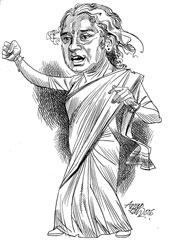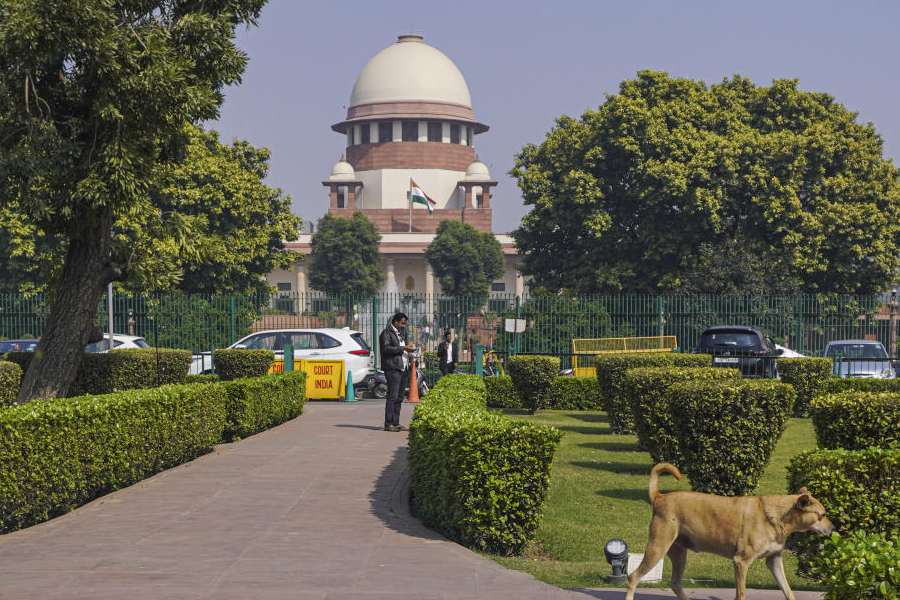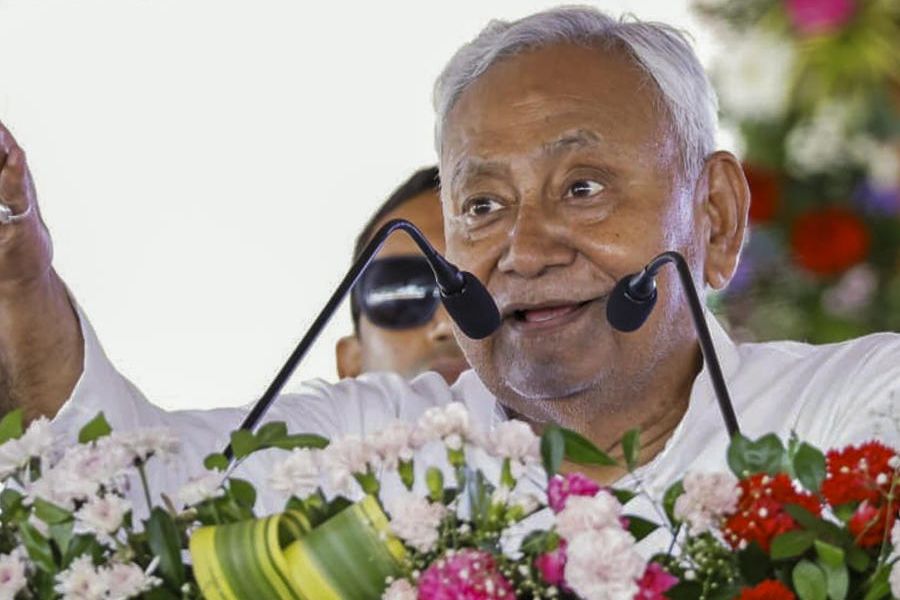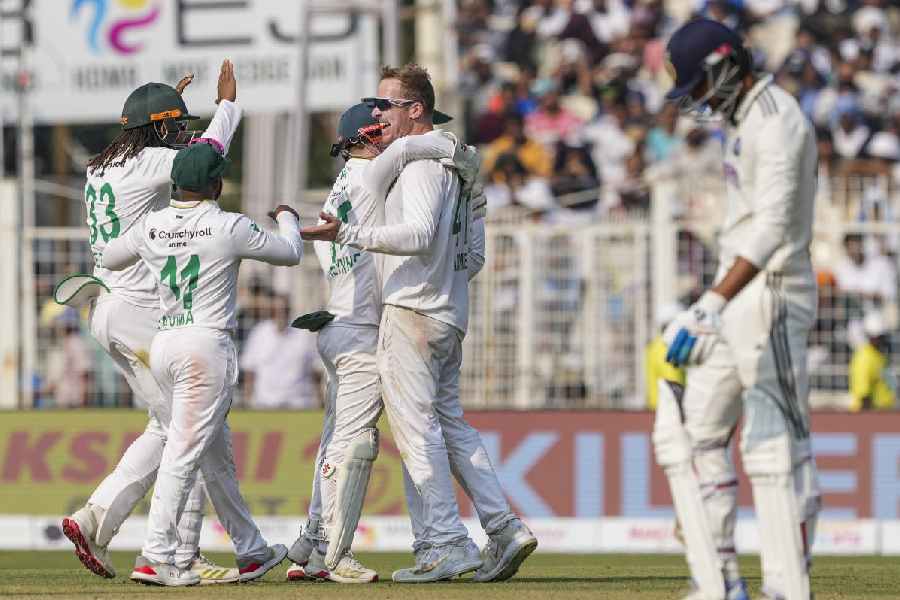|
|
All through last week, women across north India fasted. And Medha Patkar came to Delhi all the way from her native Mumbai to join in, though for a purpose altogether different. And while those who observed Navratri willingly broke their fast mid-week ? and now look forward to the divine bounties that are due to be showered on them ? Patkar was forced to break hers by the police, who carted her off to the All India Institute of Medical Sciences.
A sad end, her supporters would hold, to a noble and daring act. And what’s worse is that there’s no saying if Patkar’s fast would finally bear any result, divine or earthly. The earlier ones didn’t, after all.
And even as her followers in the Narmada Bachao Andolan (NBA) kept the hunger strike going on a pavement opposite Jantar Mantar in New Delhi, there was no indication ? at least till Friday ? that the government would finally break its silence and reconsider its decision to increase the height of the Sardar Sarovar dam by a few metres.
So would it be apt to presume that some two decades after public mobilisation against the construction of the dams first began, Patkar’s battle is all but lost? Is she no longer in the government’s spanners-in-the-cog list? And has the Narmada movement all but lost its steam?
Sympathisers of Patkar, who was born into a trade unionist-cum-freedom fighter’s family and holds a post-graduate degree in social work from the Tata Institute of Social Sciences (TISS) in Mumbai, would disagree. “The government may not be listening, but look at the immense support that people from all walks of life have come out with,” says Laxmi Murthy of Saheli, a non governmental organisation that works on women issues and supports the NBA. “It is certainly an indication that the struggle will continue until the government is forced to relent one day.”
Mustering support is a quality that Patkar has a reputation for. Those who have seen her from close quarters speak of the massive following that she has among the people in the Narmada valley. Baba Mahariya, a tribal peasant from Jalsindhi village in Madhya Pradesh who has seen Patkar at work since he was in his twenties, sums up the general opinion of the land. “She is like God to us,” says the farmer, sitting at the dharna site.
This is where she lay on her bedroll under a polythene shamiana along the walls of the Free Church of North India for eight days till the police whisked her away. Patkar is gone, but the protests at Jantar Mantar continue ? an indication, says a former NBA activist, that the movement is still alive, despite having been written off by successive governments.
But Patkar would be happy, because the police action triggered a spate of protests. On Thursday morning, more supporters picked up from where the 51-year-old leader had left ? a professor and three students from Jawaharlal Nehru University went on an indefinite hunger strike, and the speeches and songs continued.
And that’s not surprising, for the chequered history of the NBA shows that Patkar has enjoyed support not only in the hinterlands but also among the urban intelligentsia. Through her series of hunger strikes ? she almost died during a 22-day fast in 1991 ? and braving the police’s baton, Patkar has never taken to the streets alone. While writer Arundhati Roy has gone to jail for standing by Patkar and giving her movement a literary expression, thousands of tribals have joined arms, in the face of police action, to successfully halt construction of the Upper Veda, Lower Goin and Maheshwar dams.
Support came in from the outside world as well. Even the World Bank, the source of funds for the Sardar Sarovar Project, seemed to share Patkar’s opinion in 1991 when it concluded the project to be ill-conceived. Patkar was awarded the Goldman Environmental Prize in 1992, a sign that the world at large had responded to her struggle. Somewhere down the line, the Supreme Court passed an order that put a stay on further construction of the project. Patkar, it appeared, had succeeded.
But silence continued to ring and undermined the effort that the Maharashtrian activist had put in to ensure that lakh of villagers in Madhya Pradesh would not be washed away in the years to come. The raising of the dam, the NBA feared, would affect some 35,000 families.
If researchers are to be believed, frustration was one of the main reasons for her decision to sit on a fast. “Medha had gathered the masses by telling them this was a long struggle, but had not guaranteed them a positive outcome,” says Amita Baviskar, a sociologist who has studied rehabilitation in the Narmada valley at length. “Many people subsequently felt that the movement wasn’t taking them anywhere, and thus opted out by settling for whatever was offered to them as compensation.”
Patkar has not been without her share of detractors. Former associates of the NBA describe her as “autocratic.” And there are some who believe that Patkar takes the movement to a crescendo and then suddenly veers off. There has also been criticism, among those in the anti-dam movement, of her jalsamadhis ? in which she led her supporters to sit in a dharna as water levels rose around them. The administration usually stepped in at the last moment and carted the protesters away.
The politics of attrition took its toll, leaving the NBA with far less people than it had started out with. “Then Medha branched out of NBA to form the National Alliance of People’s Movements across India, a move that saw her spending less time in the valley,” says Baviskar. “In her absence, it was left to the others within the movement to keep the ball rolling.”
Easier said than done. For over the years, all that the urban world has come to associate with the NBA is Patkar. Blame it on the lack of a more prominent face within the NBA, but Patkar has clearly come to symbolise the movement, just like the movement has been her calling. Activists fear that associations such as these are ominous, for they do not hold much promise for second-generation leaders.
But despite Patkar’s involvement with other social and political issues ? there was serious talk about her fighting for a Lok Sabha seat in the 2004 election ? her soul lies in the anti-dam movement. After all, Patkar started her battle by organising rallies and protests against the Narmada dam way back in 1985. She even left her position on the faculty of TISS and her Ph.D midway to give shape to the movement.
Environment activist Avdhash Kaushal, who successfully fought for closing limestone quarries in the Mussoorie hills in the Eighties, has a word of advice for his anti-dam counterpart, though not entirely in jest. “Perhaps, the only option left for her now is to turn into a Naxalite. Maybe the government will take her seriously then,” he says. “Her non-violence just doesn’t seem to be working anymore.”
Medha with a magnum? We don’t think so.











